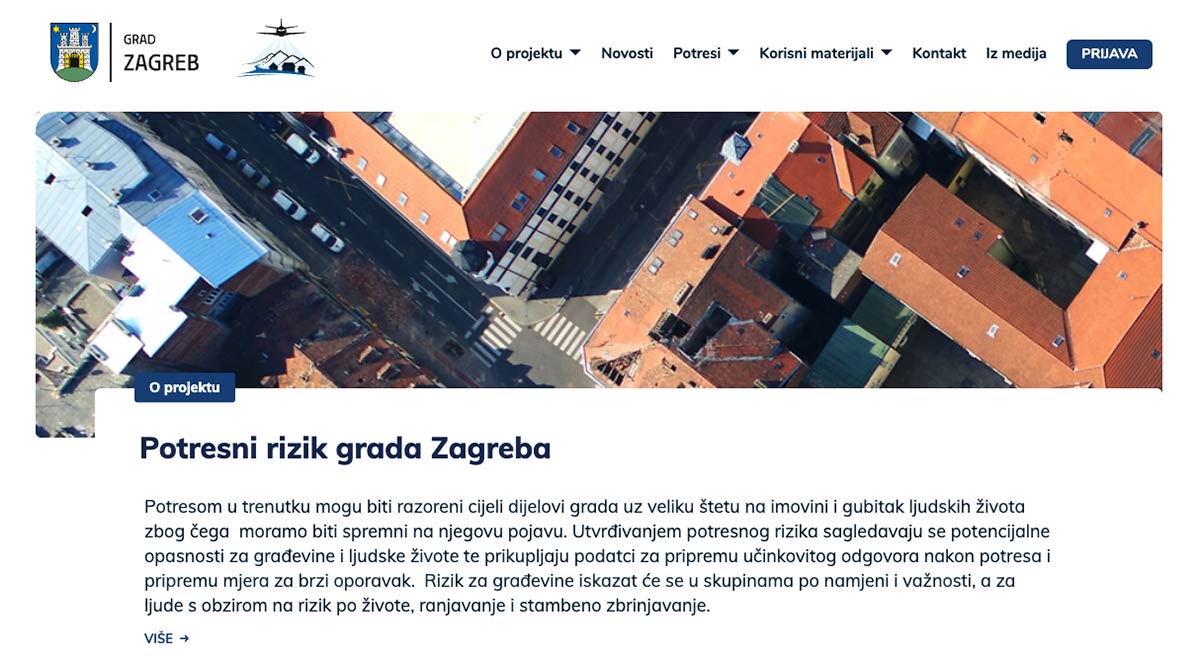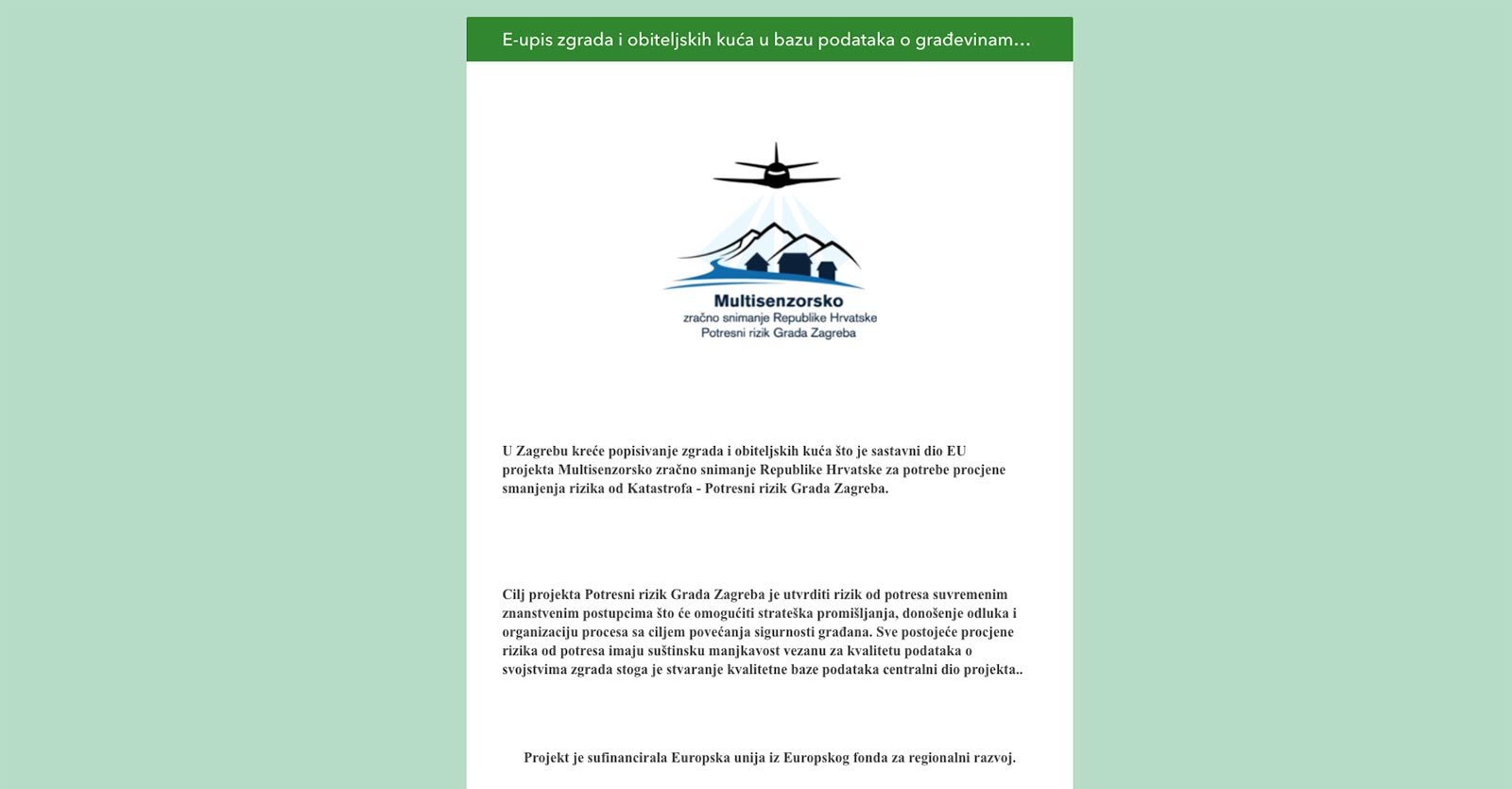GDi among partners in the Earthquake Risk in the City of Zagreb Project
As part of the EU project “Multisensor Aerial Survey of the Republic of Croatia for Assessing Disaster Risk Reduction“, the e-registration of buildings and family houses has been enabled in Zagreb since the end of September. In this way, for the first time in the Republic of Croatia and in the world, data on earthquake risks will be collected in a modern, timely and methodical manner.

The aim of the project Potresni rizik Grada Zagreba →, co-financed by the European Union from the European Regional Development Fund, is to scientifically determine the risk of earthquakes in Zagreb for buildings and people and to quantify it. Creating a database of buildings and family houses in Zagreb is the central part of the project that enables analyses and, consequently, decision making, strategic thinking and organisational processes. Considering the state-of-the-art data model and methodology applied, the City of Zagreb has become the world leader in the collection and processing of earthquake risk data.

The process of creating a list of buildings is conducted in such a way that citizens who wish to do so can enter information about their building or family house at bit.ly/e-upis-zgrada-i-kuca. From 11. 10. 2021., engineers will enumerate buildings by reviewing archival material, overlapping existing databases and on-field checks, thereby not examining each housing unit but the building as a whole. All data that will be subsequently processed and published will not be displayed for a particular building or family house, but for a local committee, city district, etc.

GDi thanks its partners in the project – the City of Zagreb, the State Geodetic Administration, the Faculty of Civil Engineering, and the Faculty of Geodesy of the University of Zagreb, as well as all citizens of Zagreb who will enter data on their building or family home. In this way they will make a key contribution to earthquake risk assessment, support the reconstruction of the city, maintenance of buildings and investments, provide a basis for the post-earthquake building inspection system and enable seismic certification.

Digital Tools for Climate Adaptation: GDi in Action with the ARCADIA Project

2nd anniversary of OLGA Project – Driving Green Aviation and Sustainable Connectivity

GDi Solutions Belgrade participated in “Urban Orchards” pilot project

GDi’s Innovative Solution Drives Croatia’s National Broadband Transformation

GDi solution for reducing the number of traffic accidents in Serbia

Mr. Boran Loncaric 2022-2023 Message

GDi partners with Luxembourg School of Business on their MBA program
